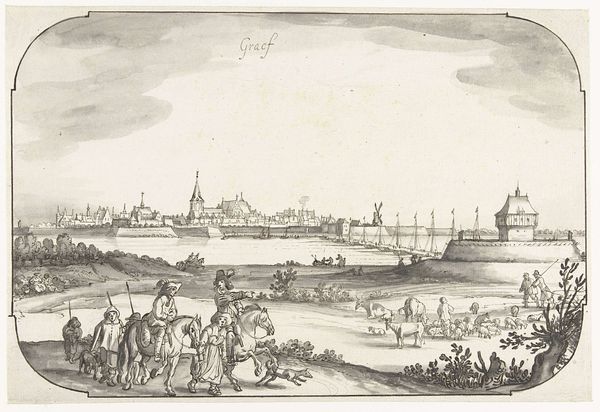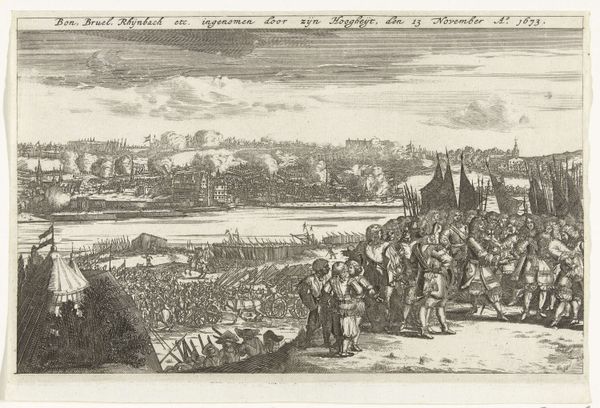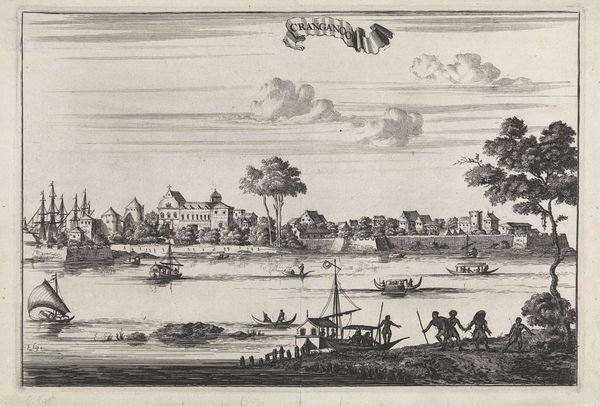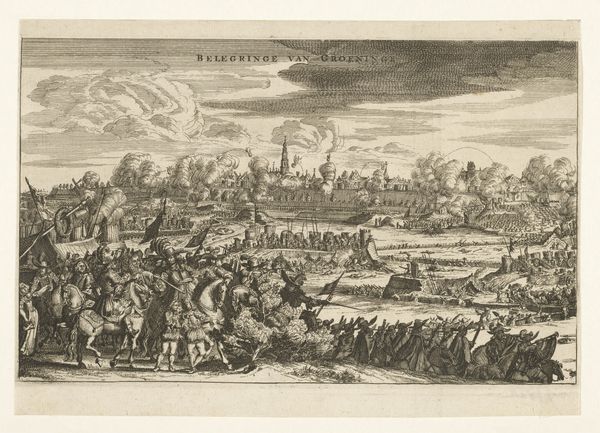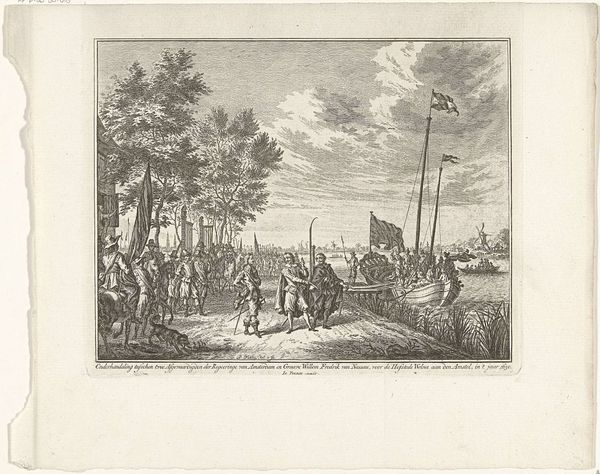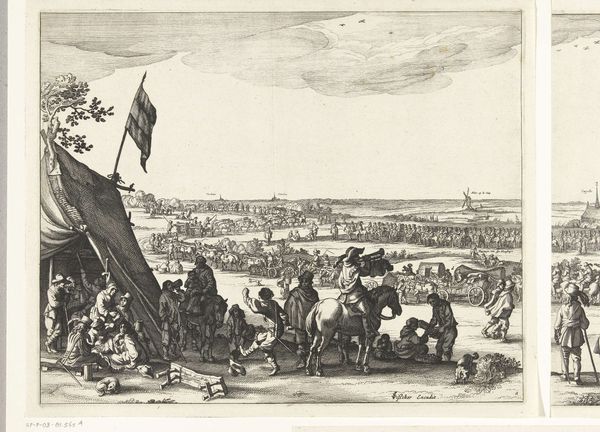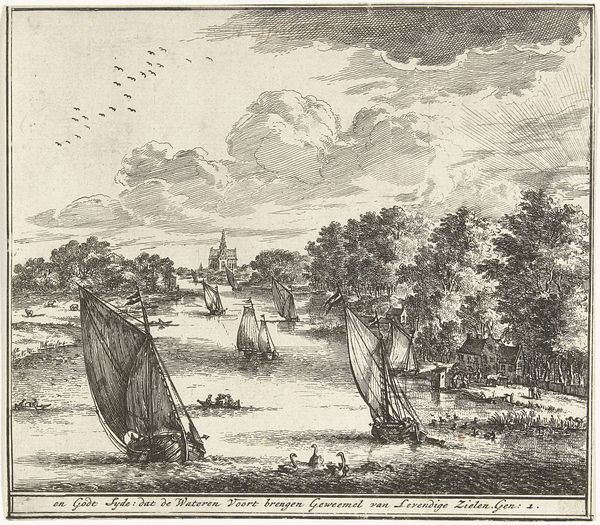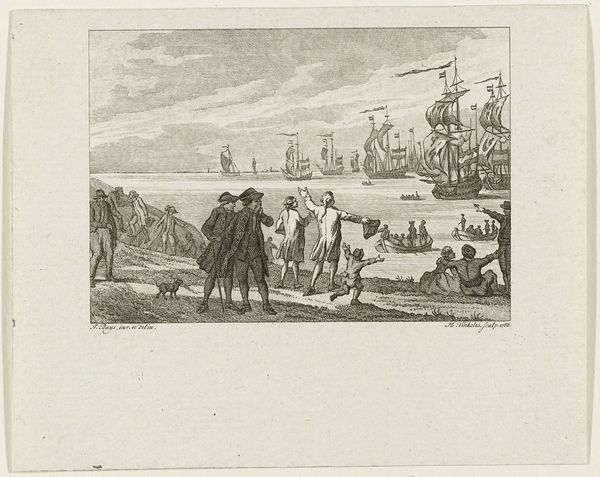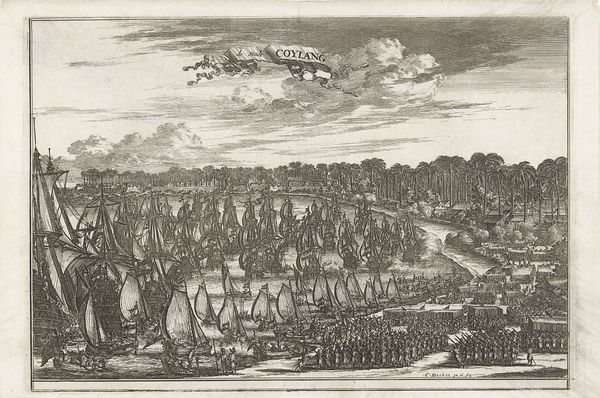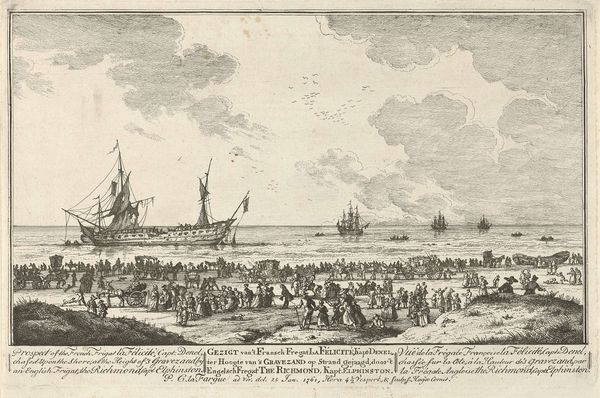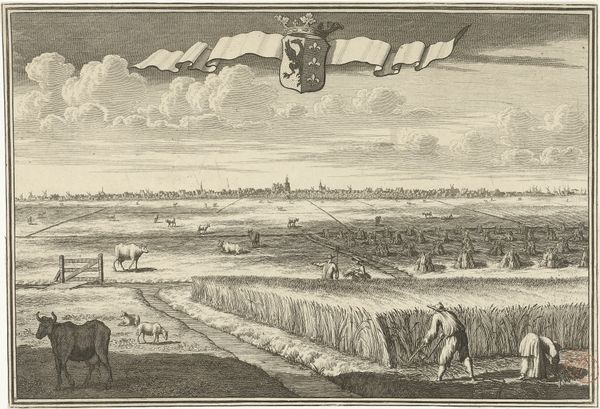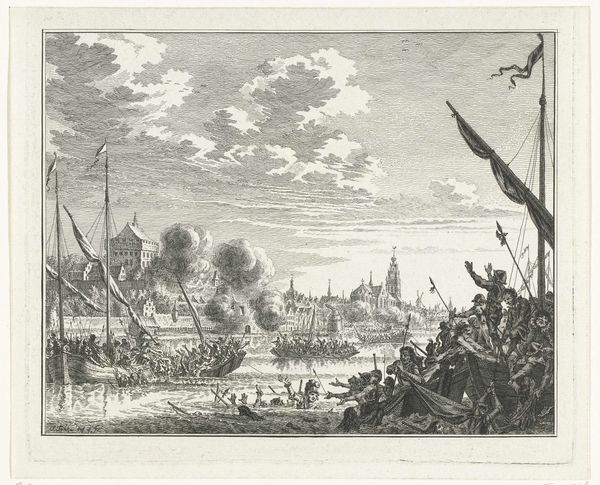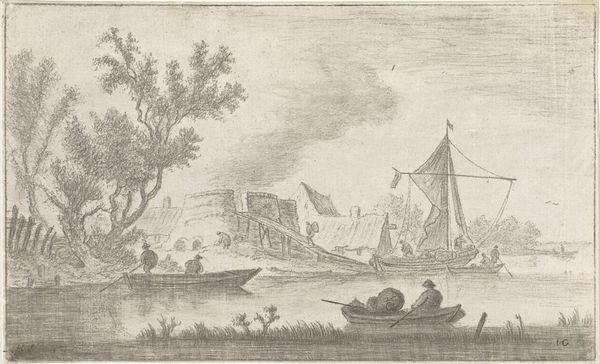
print, engraving
#
baroque
# print
#
old engraving style
#
landscape
#
cityscape
#
history-painting
#
engraving
#
realism
Dimensions: height 126 mm, width 152 mm
Copyright: Rijks Museum: Open Domain
Editor: This engraving, “Jan van Renesse en zijn troepen verdrinken in de Lek, 1304,” dating from around 1662-1664, captures a rather chaotic scene. The frantic gestures of the drowning figures really stand out. What's your take on it? Curator: Considering it's an engraving, let’s think about its materiality. An engraving is inherently reproducible; it’s designed for distribution. This historical depiction wouldn't be about singular artistic genius, but about disseminating a particular historical narrative to a wider audience, perhaps with a political slant. Who were the patrons, the consumers of this image? And what message about Dutch power and resilience were they intended to internalize through this depiction of past struggle? Editor: That's a good point. The act of making multiple copies feels really deliberate here. So, do you think the choice of engraving itself contributes to the meaning of the artwork? Curator: Absolutely. The lines etched into the copperplate represent labor, skill, and, ultimately, the mass production of meaning. Notice the level of detail despite the limitations of the medium. The artisan engraver is crucial. Was this image part of a series, a book, or distributed as a single print? Each context shifts the implications and intended function of the work. Consider also, what inks, papers, and techniques were accessible at this time? The labor to source these resources surely left a mark. Editor: So, it's less about individual artistry and more about the combined labor and materials involved in creating a message for the masses? Curator: Precisely. By looking at the production, consumption, and circulation of this print, we get a much richer understanding of its historical and cultural significance. What story about labor and materiality does it tell us now, compared to then? Editor: I never thought about it that way. I was focused on the depicted event itself, but you’ve shown me the real story is in its production and distribution! Curator: Exactly. It shifts our perspective. Now you might even consider the paper it was printed on and how it was distributed or collected to give this artwork new meanings.
Comments
No comments
Be the first to comment and join the conversation on the ultimate creative platform.
